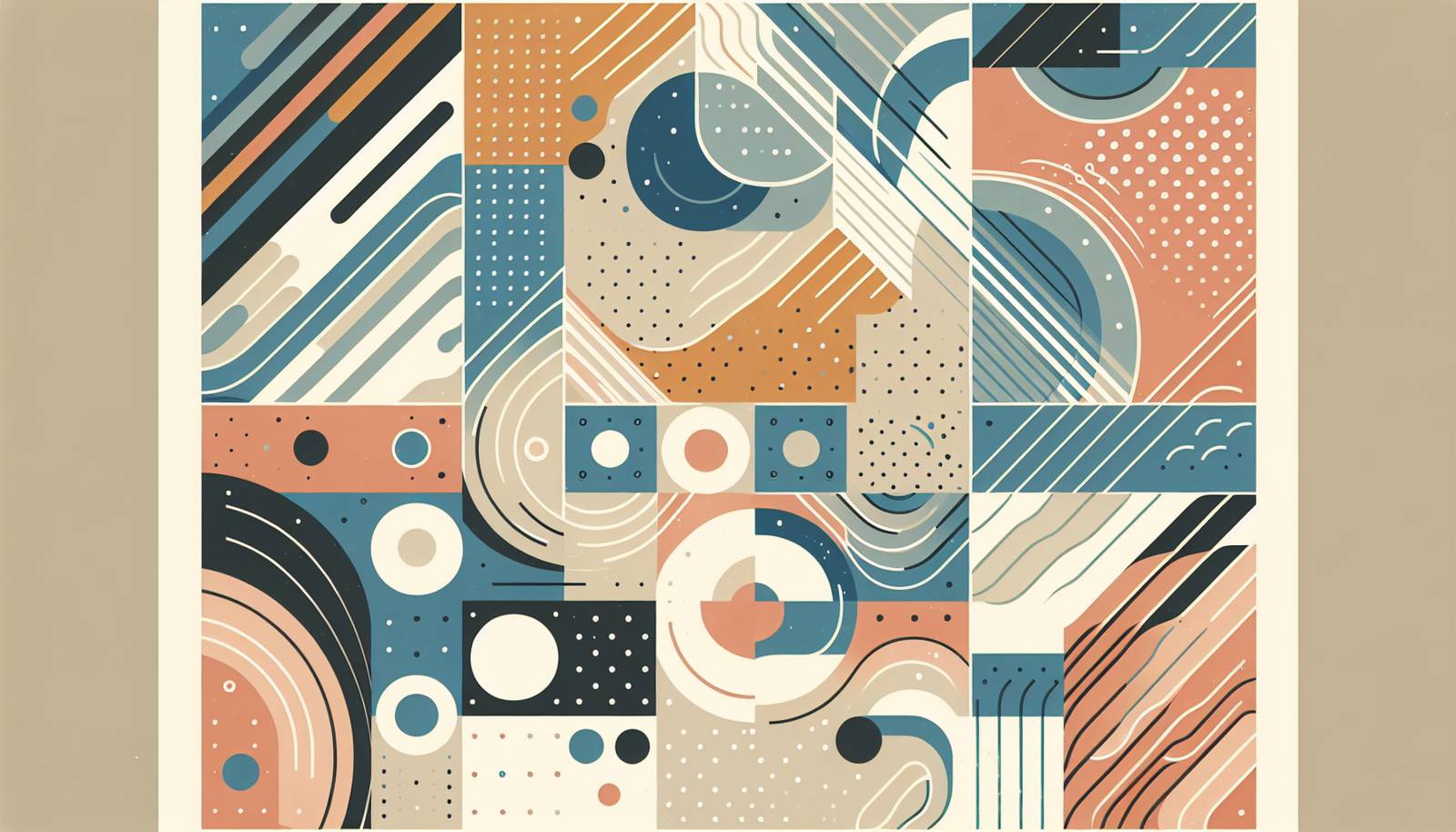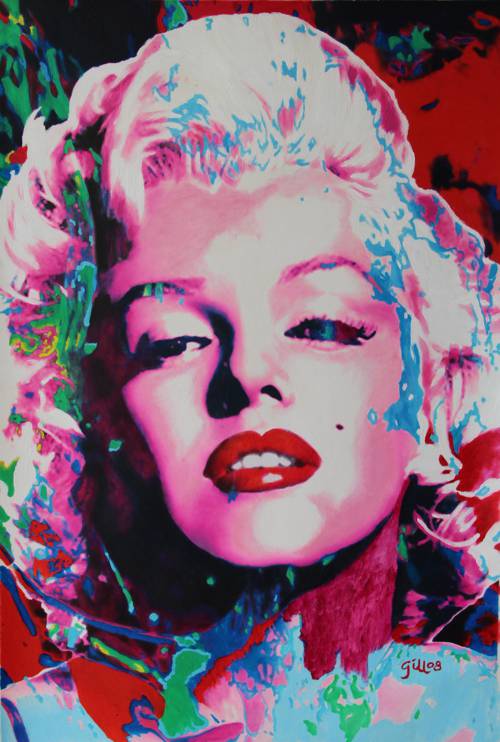
FAQ About The Influence of Pop Art on Advertising

What is Pop Art?
Pop Art is an art movement that emerged in the mid-20th century, primarily in Britain and the United States. Characterized by bold colors, recognizable imagery from popular and mass culture, and often a sense of irony or critique, Pop Art draws inspiration from sources like advertising, comic books, and everyday objects. Key figures in the Pop Art movement include artists like Andy Warhol, Roy Lichtenstein, and Claes Oldenburg.

How did Pop Art influence advertising?
Pop Art significantly influenced advertising by introducing visual elements that emphasized bold colors, iconic imagery, and a sense of irony. Advertisers drew on Pop Art's techniques to create memorable campaigns that were both visually striking and culturally relevant. The movement's focus on consumerism and mass media resonated with advertisers, leading them to adopt similar aesthetic approaches to engage consumers more effectively.

Which Pop Art artists were most influential to advertising?
Among the most influential Pop Art artists in advertising were Andy Warhol and Roy Lichtenstein. Warhol's iconic use of consumer products like Campbell's Soup cans and Coca-Cola bottles exemplified how art could integrate with advertising's commercial goals. Lichtenstein's use of comic strip styles and Ben-Day dots also inspired advertisers to incorporate such techniques into their visuals, bridging the gap between commercial art and fine art.

What are some key characteristics of Pop Art used in advertising?
Key characteristics of Pop Art used in advertising include the use of bright, bold colors, repetition of motifs, incorporation of popular culture icons, and often a sense of irony or parody. These elements help create ads that are visually appealing and memorable, effectively capturing consumer attention. The focus on consumer goods and mass media found in Pop Art aligns well with advertising's objectives to promote products.

Why was Pop Art appealing to advertisers?
Pop Art's appeal to advertisers stemmed from its direct engagement with consumer culture and its ability to make everyday objects appear vibrant and significant. The movement's playful use of familiar imagery and its commentary on consumerism helped advertisers create campaigns that were relatable and resonant with audiences. Additionally, the bold and accessible nature of Pop Art made advertising content stand out in the crowded media landscape.

How did Andy Warhol's work influence advertising?
Andy Warhol's work greatly influenced advertising by demonstrating how everyday consumer products could be transformed into art. His use of repetition and bold visuals with items like Campbell's Soup cans showed advertisers how to create strong brand identities through visual familiarity and iconography. Warhol's approach encouraged advertisers to explore aesthetics that emphasized product recognition and clarity.

Did Pop Art have any impact on modern advertising strategies?
Yes, Pop Art had a significant impact on modern advertising strategies by providing a blueprint for visual engagement and brand-building. Techniques such as the use of vibrant colors and the blending of high art with commercial interests have become staples in advertising. Contemporary campaigns often reflect Pop Art’s influence by utilizing eye-catching visuals and invoking a sense of familiar everyday culture.

Can you give examples of advertising campaigns influenced by Pop Art?
Examples of advertising campaigns influenced by Pop Art include Absolut Vodka's Warhol-themed bottles, Campbell's Soup's commemorative Warhol cans, and Coca-Cola’s use of bright, vivid colors reminiscent of Pop Art styles. These campaigns utilized elements like iconic imagery and bold color palettes to create memorable ads that capture the essence of their products and connect with consumer culture.

What role do consumerism themes in Pop Art play in advertising?
Consumerism themes in Pop Art play a critical role in advertising by reflecting and amplifying the everyday consumer's relationship with products and media. By highlighting consumer goods and popular culture, Pop Art provides a commentary that resonates with advertising’s goals to appeal to consumers’ desires and habits. This thematic focus helps advertisers align their messaging with cultural trends and societal values.

How did Roy Lichtenstein's style influence advertisers?
Roy Lichtenstein's style influenced advertisers through his distinctive use of comic strip elements, such as Ben-Day dots and bold lines. His approach turned simple illustrations into high art, thereby inspiring advertisers to adopt these graphic styles to create dynamic and engaging ads. This style addition helped in crafting not only visually appealing but also conceptually interesting advertisements that appealed to a broad audience.

How do Pop Art aesthetics contribute to brand identity in advertising?
Pop Art aesthetics contribute to brand identity in advertising by creating a distinct and memorable visual language that resonates with consumers. The bold colors, repetition, and iconic imagery associated with Pop Art help brands stand out in the marketplace and reinforce their message. By utilizing these elements, brands can convey a sense of irony, sophistication, or pop culture relevance, providing them a unique position in the market.

Has Pop Art ever criticized advertising?
Yes, Pop Art has often critiqued advertising, particularly through its playful and ironic appropriation of commercial imagery. Artists like Andy Warhol used consumer products in ways that both celebrated and questioned the omnipresence of advertising in everyday life. This dual approach allowed Pop Art to serve as both a mirror and a critique of consumer culture, reflecting advertisers’ efforts while questioning societal impacts.

What is an example of irony in Pop Art reflected in advertising?
An example of irony in Pop Art reflected in advertising is the playful imitation and repetition of consumer products. For instance, Andy Warhol's portrayal of Campbell's Soup cans reflected the mundane and mass-produced nature of consumer goods, yet elevated them to an art form. Advertisers have used similar tactics by ironically presenting everyday items as sophisticated products, thus playing on the commodification of culture.

In what ways have Pop Art techniques been adapted digitally in advertising?
Pop Art techniques have been adapted digitally in advertising through the use of vibrant colors, digital typography mimicking classic comic book styles, and the creation of digital imagery that echoes the movement's iconic look. Software tools and platforms allow advertisers to easily replicate Pop Art's aesthetic elements, maintaining its influence in the digital space by making ads that capture attention in the fast-paced digital environment.

Are there any modern artists who combine Pop Art and advertising?
Modern artists such as Jeff Koons and Takashi Murakami have combined elements of Pop Art with advertising techniques. These artists use the visual language of Pop Art to explore consumerism and engage with branding, creating artworks that are both critical of and complicit in the advertising culture. Their work continues to push the boundaries of where art ends and advertising begins, keeping the Pop Art ethos alive.

How do advertisers use repetition, a hallmark of Pop Art, in campaigns?
Advertisers use repetition, a hallmark of Pop Art, to reinforce brand messages and ensure product recall. By repeatedly displaying the same product image, logo, or tagline, advertisers embed these elements into the consumer's mind, much like Andy Warhol's repetitive images of familiar products. This strategy is especially effective in building brand identity and awareness, making the product synonymous with certain cultural or social themes.

Does Pop Art influence advertising globally or only in Western cultures?
While Pop Art originated in the West, its influence on advertising extends globally. The movement's exploration of consumerism and media resonates with diverse cultures, adapting its themes to suit local contexts. For instance, in regions like Asia, local artists and advertisers have embraced Pop Art styles to engage with urban consumer culture, demonstrating the universal appeal and adaptability of Pop Art aesthetics in advertising worldwide.

What impact has Pop Art had on consumer perceptions of brands?
Pop Art has impacted consumer perceptions by making brands seem more vibrant, relatable, and culturally engaged. By incorporating Pop Art aesthetics, brands often appear more accessible and appealing, aligning with consumer desires for innovation and trendiness. This artistic integration can also elevate ordinary products to iconic status, influencing how consumers perceive and value the brand in the marketplace.

How did Pop Art change the visual language of advertisements?
Pop Art changed the visual language of advertisements by introducing a more colorful, bold, and ironic approach to visual communication. By incorporating elements such as prominent icons and vivid color schemes, Pop Art-inspired ads break through conventional advertising norms and engage viewers more dynamically. This shift prepared advertisers to appeal to the modern consumer's desire for both aesthetic pleasure and visual engagement.

What role does parody play in Pop Art and advertising?
Parody plays a significant role in Pop Art and advertising by using humor and irony to critique existing cultural norms and commercial practices. In advertising, parody can make campaigns more engaging and entertaining, creating a connection with consumers through shared humor and cultural references. This technique allows advertisers to address social issues or trends without alienating audiences, often encouraging deeper consumer engagement.
